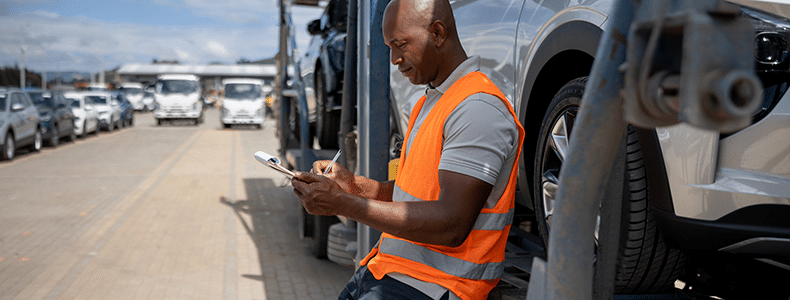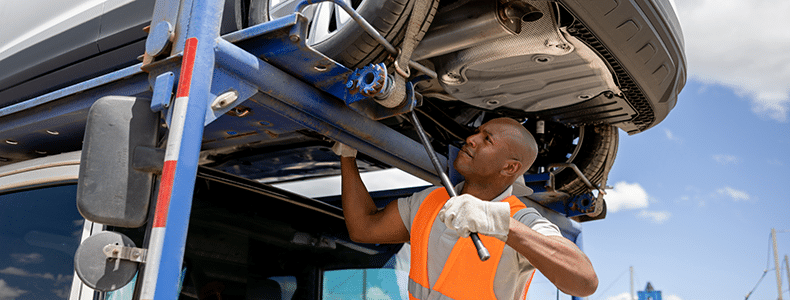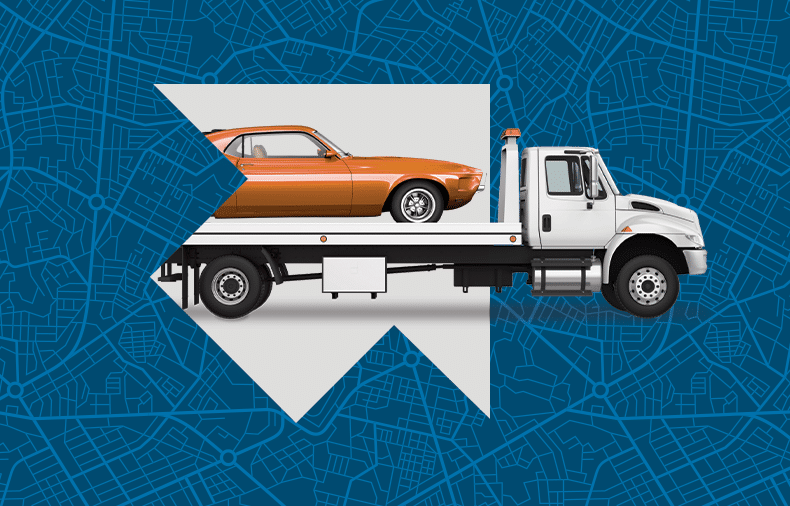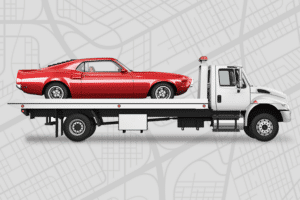If you’re like most car owners, you’ve probably heard some horror stories about shipping your vehicle in an uncovered trailer. Open auto transport gets a bad rap, and some myths might make you think twice about using open car transport. But don’t let misleading information keep you from making the best choice for your needs.
The truth is that the open car transport industry has come a long way when it comes to safety protocols and protecting your precious cargo. In this article, we’ll talk honestly about risks, bust some common myths, and highlight what professional transporters do to keep your car safe. Uncovered trailers are about more than just exposure to the elements. So buckle up, get ready to separate fact from myth, and emerge knowing precisely what you need to make the right transport choice with confidence.
MYTH VS. REALITY: THE TRUTH ABOUT OPEN CAR TRANSPORT
Myth: Open auto transport trailers provide less protection and expose cars to more risks of damage.
Reality: This notion might come from when enclosed trailers were deemed safer, but engineering advances have enabled open carriers to be just as secure. Open trailers have some advantages, like better driver visibility and ventilation to prevent condensation buildup. The key is proper loading procedures and securing cars tightly to the trailer with specialized equipment like straps, chains, and wheel nets. Your vehicle is in good hands on an uncovered trailer with reputable companies.
Myth: Road debris and hazards will inevitably damage vehicles during transport.
Reality: Professional auto transporters take measures to minimize exposure to road debris and hazards. For example, pros plan routes to avoid construction zones and high debris areas when possible. When the experts tightly load the vehicle in protective lower positions on the trailer, road hazards play a negligible role in transport damage compared to loading/unloading.
DEBUNKING TOP MISCONCEPTIONS

Misconception 1: Shipping through rain or snow will ruin your car’s finish and interior.
Fact: No one wants to drive through a blizzard, so reputable carriers avoid transporting through extreme weather when feasible. If unavoidable, waterproof protective layers are secured over vehicles. Open trailers naturally shield against precipitation better than enclosed vans. Taking proper precautions means transporting through rain or snow does not equate to damage.
Misconception 2: Vehicles are vulnerable to vandalism during transport.
Fact: Limited access and constant surveillance protect against vandalism. Cars are inaccessible and loaded in lower positions. Truck stops and rest areas are avoided. Per Department of Transportation (DOT) regulations, auto transport trailers require ignition locks and ample lighting. Vandalism is sporadic with professional carriers.
Misconception 3: Carriers cut corners on properly securing cars to save time.
Fact: Proper tie-down methods using the latest equipment for securing are pivotal, and reputable transporters invest heavily in this area for safety and compliance. Nylon straps with integrated ratchet systems are standard. Securement is checked and adjusted frequently en route. Companies know that proper protocols are critical.
SAFETY MEASURES AND PROTOCOLS IN OPEN CAR TRANSPORT
Let’s discuss how professional auto transporters keep your car safe on an open trailer. When you understand their rigorous protocols, you’ll feel more confident opting for uncovered transport.
Inspection and Preparation of Vehicles
Before loading, experts inspect vehicles thoroughly for existing damage, take photos and notes, and prep cars to prevent new damage in transit. That means checking and adjusting tire pressures, disabling alarms, removing loose items, and securing parts like antennas or spoilers. Some finishing touches include covering brakes with guards, taping mirrors and door edges, and installing protective floor mats in interiors. According to studies, thorough inspections and prep work help prevent almost 50 percent of minor transport damage.
Secure Loading and Unloading Procedures
The goal is always to load vehicles snugly and symmetrically to prevent shifting. Specialized equipment secures cars at all contact points. Wheel straps immobilize tires and wheel nets keep loose items contained, while load bars cushion space between vehicles. Chains, nylon straps with integrated tensioning mechanisms, and vehicle brackets create a tight fit. Drivers manually shake each car, checking for movement.
Expert drivers are cautious during transport and unloading, too. They avoid quick acceleration or braking that can shake loose chains and straps. Vehicles are unloaded individually in a controlled manner using ramps. Emptying accounts for more than 30 percent of transport damage, so suitable protocols are critical.
Driver Training and Safety Standards
Rigorous training and upholding strict standards are pivotal to open car transport safety. Drivers undergo extensive instruction on learning load securement, reading road conditions, conducting inspections, maneuvering vehicles, and following safety protocols. Many professional carriers train drivers in-house with their higher-than-industry standards. Solid training means smoother transport and fewer risks.
Equally important are enforcing hours-of-service rules, truck speed limits, and scheduled maintenance. Responsible companies equip trucks with monitoring systems and optimize routing logistics for compliance and accident prevention. By investing in their drivers and equipment, carriers minimize risks significantly.
RISKS ASSOCIATED WITH OPEN CAR TRANSPORT AND MITIGATION STRATEGIES
Now that we’ve reviewed all the safety measures professional transporters take, let’s chat about potential risks and how companies mitigate them. We’ll keep it honest with you — open-car shipping has some risks, but knowing how responsible carriers minimize them can give you confidence.
Understanding the Risks: Weather, Road Hazards, and More
We touched on bad weather already. Shipping through extreme snow or heavy rain increases the risk of damage compared to sunny skies. Suitable carriers don’t take unnecessary chances. If conditions look dicey, they halt transport, wait it out, or change routes. They proceed cautiously, using sturdy protective coverings if it’s a calculated risk. Minor finish damage might occur, but reputable companies own up to it.
Road debris and hazards are another concern, especially with high-speed driving. Companies take every preventative, from planning routes wisely to tire inspections. However, an odd rock here or there can still hit your car’s underside or cause a crack. It’s rare, but transparent operators disclose damage upfront. They have systems to catch issues during mandatory inbound and outbound inspections.
Let’s discuss theft. With constant surveillance and limited access, it’s highly uncommon. But no one can 100 percent guarantee it won’t happen if some crook is committed. That’s why licensed, insured carriers with financial protections matter. It also helps when companies hire drivers as full-time employees, not contractors. More oversight motivates responsible habits.
CHOOSING THE RIGHT OPEN CAR TRANSPORT SERVICE

Finding an open car transport company you can trust to ship your vehicle safely is vital. Here are tips on what to look for in a reputable auto transporter.
Certifications and Insurance: Checking Carriers
When evaluating potential open car transporters, start by checking:
MC Authority Number and State Permits
- Legitimate companies must have a motor carrier (MC) license from the Federal Motor Carrier Safety Administration (FMCSA). This authorizes them for commercial transport nationally.
- They should also have active permits for all states they operate in. Double-check this info independently on the FMCSA website.
Adequate Insurance Coverage
- At a minimum, carriers need $100,000 in cargo and liability insurance. But $250,000-$500,000 is better protection.
- Verify insurance information directly with its provider. Don’t just take a company’s word. Actual coverage is crucial.
Screening Practices and Fleet Maintenance
- Ask about driver screening methods. Responsible carriers do extensive background checks.
- Well-maintained equipment with recent inspections indicates safety commitment.
Customer Reviews and Reputation
- Read third-party customer feedback on past transport experiences. This gives insight into actual practices.
- An established history and industry affiliations like the Auto Haulers Association of America (AHAA) often mean more knowledge.
- Avoid carriers with major complaints or safety violations. Transparency matters.
uShip’s Commitment to Safe, Secure Auto Transport
At uShip, we make safety and security top priorities for customers:
- Our marketplace offers quotes from thousands of independent carriers and brokers, providing ample choice.
- Customers can read carrier reviews, see insurance information, and get transparent pricing upfront.
- Our experts provide support throughout your shipping experience.
For peace of mind when choosing open car transport, turn to uShip. We aim to make vehicle shipping easy and safe.
CUSTOMER EXPERIENCES SUCCESS STORIES
Let’s talk about the experiences of uShip users who chose open car transport to move their vehicles.
Sarah was moving from Florida to Oregon and needed her SUV shipped cross-country. She was anxious about using an open carrier at first. But uShip’s detailed carrier profiles helped her pick a company with glowing safety reviews.
The constant updates and pictures from the driver throughout the trip made Sarah feel much better. Even when they hit snow in Colorado, she knew her car was protected under a heavy weather tarp. And you guessed it — her SUV arrived without a single scratch.
James was equally nervous about his cherry-red vintage Mustang being exposed on an open trailer. But he took advantage of uShip’s advice to inspect the loading himself for peace of mind. Watching the step-by-step securement process eased his worries big time. That baby was strapped down tight as a drum!
Despite encountering rain along the route, the Mustang rolled off the transport truck in perfect condition. James was so impressed that he gave the driver a huge tip. The moral is that with uShip’s support, open transport can exceed your expectations.
HOW USHIP IMPROVES OPEN SHIPPING SAFETY
Our platform also makes it super easy to compare carriers side-by-side. You can read other customer reviews, see safety stats, and get transparent pricing. Empowered users make more intelligent choices.
Our team is available to answer questions or handle any issues immediately during transport. Plus, you get real-time status updates so you always feel in the loop. With uShip guiding the way, open car transport can be a fantastic, hassle-free experience.
CONCLUSION: THE FUTURE OF SAFE OPEN CAR TRANSPORT
The open car transport industry innovates new technologies and protocols to maximize vehicle safety during shipping. Real-time tracking is becoming more precise, enabling companies to monitor shipments closely, even through remote areas. New durable protective coverings shield against weather and road hazards. Tire, brake, and suspension design advancements improve accident prevention on transport trucks.
Many carriers also invest in custom-built trailers with more innovative securement systems to lock cars tightly in place. Some companies use artificial intelligence-assisted loading programs to create optimal distribution and weight balancing. More advanced driver-assistance features on rigs, like collision avoidance, further reduce risks.
As the industry adopts innovations, uShip will continue empowering customers to make informed choices backed by reliable protections. With our growing database of customer reviews and carrier credentials, users can stay on top of who offers leading safety services as technology progresses.
At uShip, open transport can deliver vehicle shipping that’s affordable, efficient, and safe through innovation. But technological advances mean nothing without transparency and accountability. That’s why we’ll continue placing customer security and satisfaction first. When you’re ready to book open car transport with confidence, let our industry-leading protections and service give you peace of mind. The future of safe, available car shipping is bright, and uShip intends to lead the way.
PEOPLE ALSO ASK (PAA) QUESTIONS
What are the risks of open car transport?
The main risks are exposure to weather/road hazards and potential damage during loading. However, reputable companies take every precaution to minimize risks. Proper tie-downs and regular inspections are critical.
How does weather affect open car transport safety?
Bad weather always adds risk, but professional carriers use heavy-duty covers and change routes to protect vehicles when possible. Minor exposure doesn’t mean guaranteed damage.
What safety measures should a car transport company have in place?
Rigorous loading protocols, tie-down methods, driver training, and frequent inspections are four key areas for safety. Real-time tracking, weather monitoring, and contingency routing are important to have, too.
How do I prepare my car for open transport?
Clean it thoroughly, turn off alarms, remove antennas and loose parts, and check fluid levels. Report any prior damage and take photos. Allow inspections beforehand.
Can I pack personal items in my car during open transport?
Yes, but remove any valuables and ensure load limits. Securely pack items to prevent shifting that could damage the interior. Inform the carrier about what’s inside.
How is the safety of the driver ensured during car transport?
Many safety measures include hours-of-service rules, tracking, well-maintained equipment, training, and federal regulations for commercial driving.
How do I verify the credibility of an open car transport company?
Verify motor carrier (MC) authority number, operating licenses, insurance paperwork, safety records, customer reviews, and experience claims directly with sources.
What are the benefits of choosing open car transport over enclosed?
Open transport costs less, fits any vehicle’s height, and has better ventilation and visibility. Safety is comparable to a reputable carrier, and it can offer more flexible scheduling, too.



